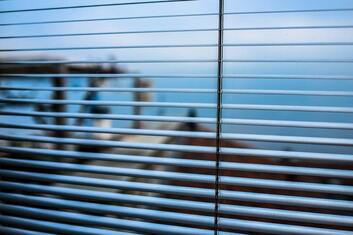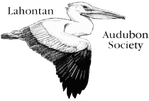|
By Kentia Kalanaki  Window blinds half-open Window blinds half-open Birds hit windows. That’s a commonly known fact. But most people don’t realize how big of a problem window collisions actually are. Every year, up to 1 billion birds die from hitting windows. Now, that’s a gigantic number, isn’t it? Much, much larger than it could be, than it should be. Think about it. Are there birds hitting your window? If it doesn’t happen regularly, it must have happened at least a few times in the past. It may even be happening without you knowing. If they hit your window and you don’t notice (or you’re not home) you likely won’t even see the dead bird, because its body may be taken away by predators. Even if you see a bird hit your window and fly away, it may not be unharmed- it could suffer from broken bones and/or internal injuries. So there’s many more casualties than just what you see laying on the ground beside the window. Why do birds even hit windows in the first place? Most of the time, it’s because they see the reflection of the outside world in the window, and they think it’s just another open space. Sometimes though, they see the inside of the building, which also causes them to think they can fly in. The fact that windows these days are coated in UV-reflective coating doesn’t help, as birds can see in UV. The UV-reflective coating just reflects the light coming from the landscape outside, which, again, causes birds to think it’s an open space. One common reason for window collisions is bird feeders. It’s somewhat counterintuitive, but there will be less casualties from window collisions if the feeder is located very close to the window (less than 3 feet away). That’s because the birds won’t have enough time to gain momentum before they hit the window, so the collision won’t be deadly. The closer the feeder is to the window, the better. However, if you can’t get the feeder close up to the window, then try moving it really far (more than 10 feet away) so that there won’t be too many birds around your window. If the collisions aren’t being caused by a nearby feeder, then there are still a few solutions you can try. Contrary to popular belief, hawk stickers on windows are NOT proven to work! There are other things you can try though... First, there are Acopian birdsavers. They’re easy to install, long-lasting, and effective. They consist of lengths of paracord, each a few inches apart, hanging from the top of your window all the way to the bottom. They work well because the birds will no longer feel as if there’s a large opening where the window is. Learn more about Acopian birdsavers, and how to make them yourself (or buy them), from https://www.birdsavers.com/. Another common solution is to apply vinyl dot stickers to the window. These dots are small decals which are to be placed evenly spaced (2” apart from each other). They work the same way as the Acopian birdsavers- by showing the birds that the window isn’t just another open space. You can get the window dots (and learn more about them) here: https://www.conveniencegroup.com/featherfriendly/feather-friendly/ There’s one more very simple thing you can do. If you have blinds on the window, leave them half-open. The striped pattern they make will act like the Acopian birdsavers and window dots. Closing the blinds (or curtains if you have them) will NOT help, because then the birds will just see the reflection of the outside world in the window, and still fly into it! Remember, every small action helps! Every step you take towards helping the birds in your backyard is a step in the right direction! If you see that there are birds hitting your window, consider trying one of the solutions listed above. If none of those work for you, then you can search in abc birds for more solutions: https://abcbirds.org/glass-collisions/products-database/. Thank you for helping save our feathered friends! |
topics
All
Archives
July 2024
|


 RSS Feed
RSS Feed